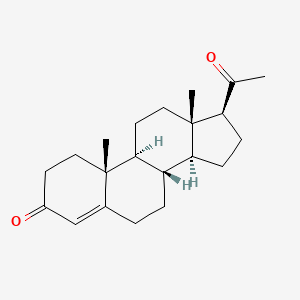1.The main purpose of detecting sex hormone secretion:
Testing sex hormone levels is an important means of evaluating the function of the endocrine system. Its core purposes include the following five aspects:
- Evaluate reproductive health: Check for infertility, menstrual disorders (such as amenorrhea, abnormal bleeding) and other problems, which directly reflect the function of gonads such as ovaries and testicles.
- Diagnose endocrine diseases: Assist in the diagnosis of polycystic ovary syndrome (PCOS), premature ovarian failure, menopausal syndrome, pituitary tumors and other diseases, which are often accompanied by abnormal fluctuations in sex hormone levels.
- Monitor treatment effects: For example, during hormone replacement therapy (such as estrogen supplementation during menopause) and in vitro fertilization ovulation, it is necessary to dynamically adjust the medication regimen through sex hormone levels.
- Detect abnormal development: Identify developmental abnormalities such as precocious puberty (premature increase in sex hormones in childhood) and delayed puberty (lower sex hormone levels than peers).
- Check for disease risks: Certain diseases (such as ovarian cancer and testicular tumors) may lead to abnormal secretion of sex hormones, and detection can be used as a reference indicator for early screening.
In short, sex hormone testing is a key tool for determining fertility, identifying endocrine disorders and potential diseases.
2.Why can't the estrogen or androgen that the customer asked about be tested by ELISA? What indicators should be tested for androgen or estrogen?
Androgens (such as testosterone, dihydrotestosterone DHT, and androstenedione) and estrogens (such as estradiol E2, estrone E1, and estriol E3) are collectively referred to as a class of hormones, not a single substance. The ELISA (enzyme-linked immunosorbent assay) kit is a detection method designed for a specific molecular structure and can only accurately quantify a specific substance (such as cytokines such as IL-6 and TNF-α ). Therefore, there is no such thing as an "androgen ELISA kit" or an "estrogen ELISA kit."
When testing sex hormones clinically, the core indicators are usually covered by the "six sex hormones", including:
- Estradiol (E2): The most important estrogen, directly reflecting ovarian function (clinically referring to "estrogen" usually refers to E2).
- Progesterone (Pg): Evaluate corpus luteum function (such as whether the corpus luteum secretes progesterone normally after ovulation).
- Testosterone (Testo): Evaluate androgen levels (too high may be related to PCOS and hirsutism).
- Follicle-stimulating hormone (FSH): Reflects ovarian reserve function (elevated FSH indicates ovarian dysfunction).
- Luteinizing hormone (LH): Evaluate ovulation (LH peak is the key signal for ovulation).
- Prolactin (PRL): Affects menstrual cycle and ovulation (too high PRL can inhibit ovulation and lead to amenorrhea).
Therefore, if sex hormones need to be tested, it is recommended to choose the ELISA kit of "six sex hormones" to comprehensively evaluate the endocrine status by comprehensively analyzing the results of various indicators.

Estradiol (E2)[1]

Progesterone (Pg)[2]

Testosterone (Testo)[3]
3.The core significance of testing estradiol (E2)
Estradiol (E2) is the most active estrogen in the body. Changes in its levels have a key impact on reproduction, metabolism and overall health. Specific application scenarios include:
(I) Women's health related
- Evaluation of ovarian function: Decreased E2 may indicate premature ovarian failure and decreased reserve function; increased E2 may be seen in polycystic ovary syndrome (PCOS) or ovarian granulosa cell tumor.
- Diagnosis of menstrual disorders: In diseases such as amenorrhea and abnormal uterine bleeding, E2 levels can assist in determining the cause (e.g., low E2 may be low gonadotropin amenorrhea, and high E2 may be ovulatory disorders).
- Determine menopause: The E2 level of perimenopausal women gradually decreases, accompanied by increased FSH, which can be used as a reference for menopause diagnosis.
- Screening for gynecological tumors: Ovarian granulosa cell tumors can abnormally secrete E2, resulting in a significant increase in E2 levels, which can be used for auxiliary diagnosis and efficacy monitoring.
(II) Men's health related
- Checking for sexual dysfunction: E2 and testosterone (Testo) in men need to be balanced. Too low E2 may reduce sexual desire; too high E2 may be related to testicular dysfunction.
- Diagnosis of male breast development: An imbalance in the E2/Testo ratio (relatively elevated E2) can stimulate breast tissue proliferation and lead to male breast development.
- Detection of tumors: Testicular or adrenal tumors may abnormally secrete estrogen, leading to abnormally elevated E2 levels.
(III) Other applicationss
- Assisted reproduction: During IVF ovulation induction treatment, monitoring E2 levels can evaluate follicle development and guide the timing of egg retrieval.
- Diagnosis of precocious puberty in children: Secondary sexual characteristics appear before the age of 8 in girls and before the age of 9 in boys. If the level of E2 (female) or testosterone (male) is elevated, it indicates the possibility of precocious puberty.
- Guiding hormone replacement therapy: When women supplement estrogen during menopause or after oophorectomy, they need to monitor E2 levels to avoid overdose (increase the risk of thrombosis and breast cancer).
Summary: Sex hormone testing is an important tool for diagnosing endocrine diseases and managing reproductive health. Among them, the "six sex hormones" can comprehensively evaluate the secretion status of sex hormones by covering core indicators (such as E2, testosterone, FSH, etc.); and estradiol (E2) as the most critical estrogen has irreplaceable monitoring value for female reproduction, metabolism and male hormone balance.

Estradiol 3D (E2) [4]
[1] ChemSpider. (n.d.). Chemical structure 5554. Retrieved from https://www.chemspider.com/Chemical-Structure.5554
[2] National Center for Biotechnology Information. (n.d.). PubChem Compound Summary for CID 5994. Retrieved from https://pubchem.ncbi.nlm.nih.gov/compound/5994
[3] National Center for Biotechnology Information. (n.d.). PubChem Compound Summary for CID 6013. Retrieved from https://pubchem.ncbi.nlm.nih.gov/compound/6013
[4] National Center for Biotechnology Information. (n.d.). PubChem Compound Summary for CID 5757. Retrieved from https://pubchem.ncbi.nlm.nih.gov/compound/5757
